Saturday, August 19, 2023
Today was the last day of the Tauck tour. We got an early start - well....9:30, which was early enough for us and a great time to go before the heat set in.
The activity was a walking tour of the area, along with 1,000 years of Spanish history related in detail by today's local guide. Some of it related to a particular street we were on or a building we passed, but much of it was the litany of endless kings and battles, Christians and Muslims and Jews, and the rise and fall of empires.
Madrid is the youngest of the European capitals, being chosen as such in the 1500s. Toledo, 70 miles to the south, was a much more important city, but the king chose Madrid (population only 70,000 at the time) because it was in the center of the country.
The first must-take-a-picture spot was the statue of the Bear and the Strawberry Tree.
There are many stories about why this is the symbol of Madrid. Bear: There were bears in the area or the bear represents an agreement between different religious orders or it shows strength in battle, or......
Tree: maybe it's a strawberry tree, although there is no such thing and they don't grow around here, or maybe a different kind of berry tree whose fruit helped cure people during the Black Death plague, except the berries don't do that, or.....
Then we came to Casa de Correos (headquarters of the Presidency of the Government of the Community of Madrid and the building in which the famous clock that strikes the twelve bells of New Year's Eve is located). In front of it is the second must-take-a-picture spot. It is a metal disc that says "Km. 0". This indicates that Madrid is at the center of the country (using current measuring systems, the actual geographic center is 4 miles to the east, but, ok...close enough).
Surrounding this is a ring that shows, in their correct directional placement, many of the larger Spanish cities.
Next we walked to.....get ready....the Plaza Mayor! This was first built at the end of the 15th century. At times it was a market and a theater and a bullfighting ring, and......the place where they held public executions during the inquisition. Yes....for about 10 years from 1492, several hundred people were burned at the stake or hanged each Saturday. It was done in public to terrorize those Jews who were practicing in secret to convert to Christianity. This is common knowledge--except that our tour guide denied there was a Spanish Inquisition. Huh?!? We will test this notion with our private guide on Sunday.
Believe it or not, bullfighting began (per our guide) as a way for Christians to reaffirm their faith, in contrast to Muslims who banned such savagery. I guess there is some logic in here somewhere. Today there is a strong difference of opinion as to whether this "sport" should continue or not.
A statue of Felipe III is at the center.
Here we are a few minutes later:
The time is about 10:30 am. Why are our shadows so long?
Hmmmmmmmm.
Because......the Spanish time is 10:30, but the SUN time is 8:30.
Huh?
It goes back to WWII. Franco (the Spanish dictator) wanted Spain to be on the same time as Germany to impress you know who. So he moved the time forward. (Supposedly, this is the reason that the Spanish do everything so late...like dinner at 9 pm). After the war, they never changed back! Here is more on the story.
We walked on and came to a market! We love those! Except that this market had been turned into a food court / eatery (like we have in Chicago) a few years ago. But it still has different meat and produce purveyors mixed in with the sandwich and other food vendors. Here are pix of the former.
This street sign pointed the way to our next stop:
We knew they use a comma where we use a decimal point, but why do they show the extra two zeroes as in "0,500 km"?
Just beyond, we got to Plaza de la Villa, which hundreds of years ago, was the original Plaza Mayor! Here we saw a Palace (from the 1500s, predating the square by almost a century) and the 1600s City Hall.
Our final stop was the Royal Palace. This was built by the Bourbons when they took over from the Hapsburgs (more here). It is still used today, but almost exclusively for visiting heads of state and official state ceremonies.
It is truly impressive....2.5 times bigger than Versailles....but no gardens.
As soon as we set foot in the courtyard, we remembered it from our first visit to Madrid in 2004. Nothing has changed in the Palace since then; can we say the same about us?
😂 😂 😂 😂 😂 😂 😂
The inside is, as you would expect, fit for a king. Unfortunately, most areas are off limits for photos, so here is what we were able to get.
 |
| The Royal Chapel On the way back to our bus, we finally got the chance for a costume picture: a matador and a Lady of Spain! |












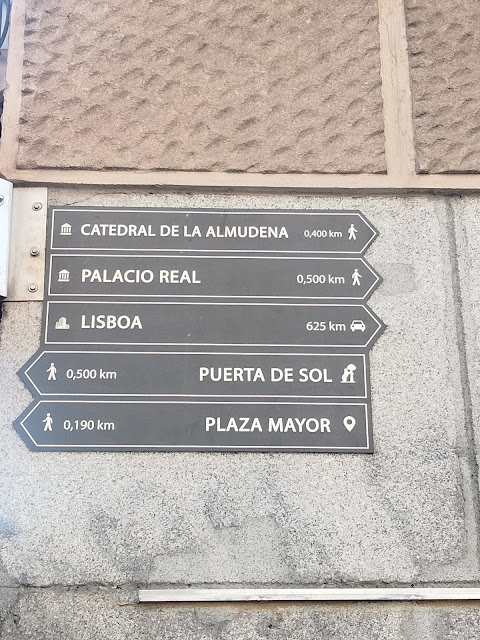

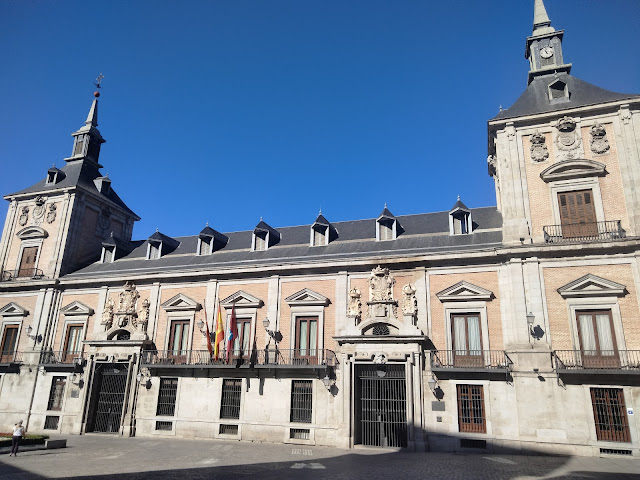



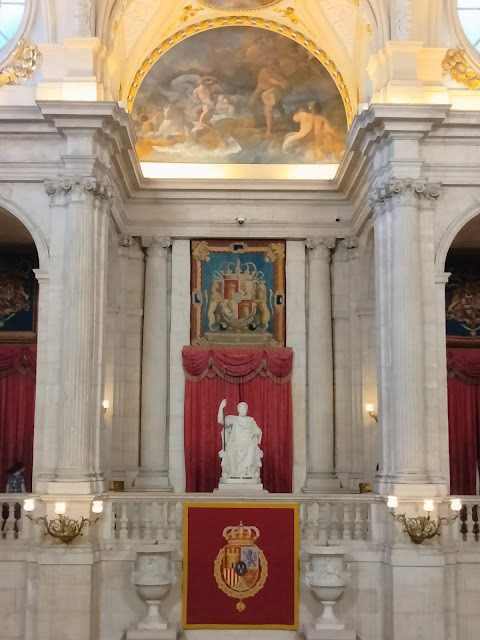
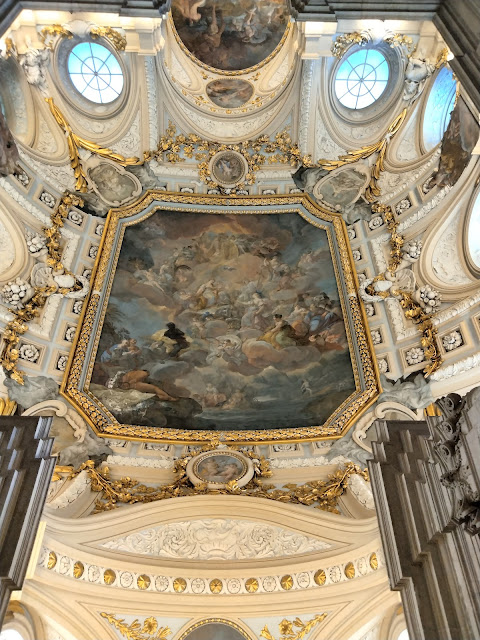


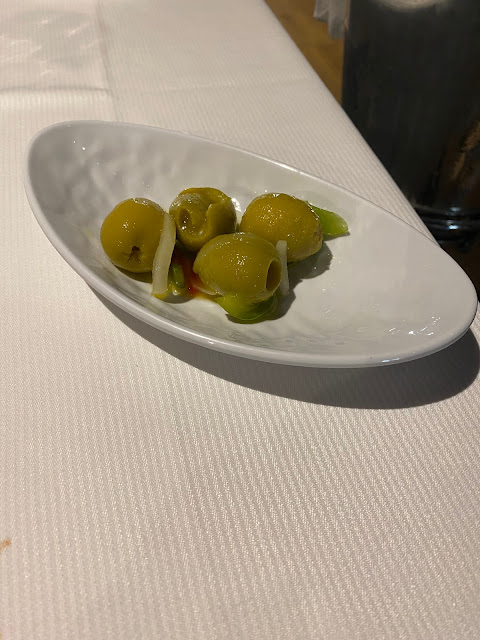



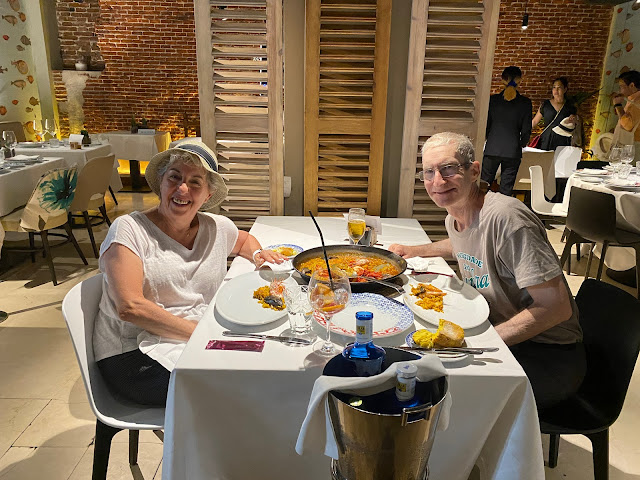


No comments:
Post a Comment